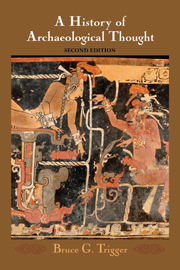For more than a century, archaeologists have frequently been drawn to understand the human past in broadly evolutionary terms, applying Darwinian thinking to the development of human societies. The unilinear models of human development that often result typically regard the state as the culmination of human progress, the end-point of a journey through intervening stages of bands, tribes and chiefdoms. Neo-evolutionary thinking was especially prevalent from the 1940s onwards, in the work of Julian Steward and others writing on the origins of the state. In the volume reviewed, Norman Yoffee challenges the former dominance of the neo-evolutionary approach, arguing that over the past half century it has stifled rather than stimulated our understanding of early state development.
Yoffee contests the idea that states develop through a series of programmatic stages from less complex kinds of society. Instead, he stresses the diversity of the archaic state, drawing heavily on his specialist knowledge (drawn from texts as well as archaeology) of early Mesopotamia. Here we see city-state societies in which heterarchies play a role alongside hierarchies, and in which the varieties of lived experience varied considerably from place to place, even though all may at some level be considered to have been part of a shared Mesopotamian civilization.
Yoffee's book is not, however, concerned solely with Mesopotamia; far from it, he draws comparative evidence from Egypt, South and East Asia and Central and South America to demonstrate the diversity and fluidity of the entities he is describing. Few of them conform to models that might be drawn from ethnography, and each state may in many ways be considered unique. Yet in a broader perspective, all states arise through a widespread pattern of change that has taken place in human society since the end of the Pleistocene in which individuals and groups have competed for control of resources.
Yoffee concludes that ‘The central myth about the study of the earliest states ... is that there was something that could be called the archaic state, and that all of the earliest states were simply variations on this model’. The methodological alternative is to consider each society (of whatever type) as individual and unique, and constantly in a state of flux. In this review feature we invite a series of archaeologists specializing in the study of early states to address this and other issues raised by this important book. We begin, however, with an opening statement from the author himself.




